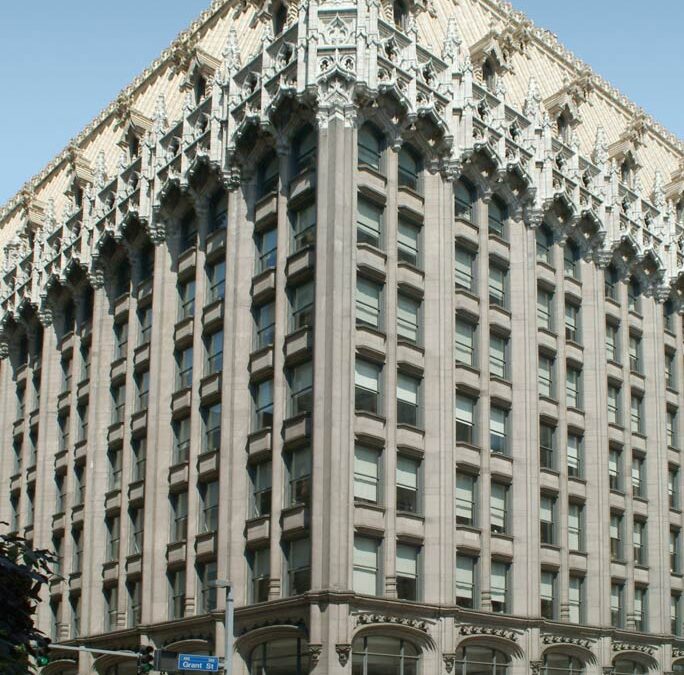The Frick Building’s 3-Year Historic Restoration Project
The Frick Building in Pittsburgh, Pennsylvania is an iconic structure in the downtown area and is listed as a Registered Historic Landmark in the City of Pittsburgh. The historic restoration project began with an investigation into the failure of a one-ton granite section that fell 300 feet onto the city street.
As a result, a comprehensive effort was undertaken by the team at Graciano to stabilize, repair, and restore the facade, as well as install a new roof and implement a specialized facade maintenance system. Multiple challenges were encountered, including permit coordination, facade access, outdated structural systems, budget constraints, a fire on site, and logistics.
As the restoration progressed, multiple phases were developed based on turning points and transitions.
 Building Failure Investigation & Stabilization
Building Failure Investigation & Stabilization
In the initial phase of this Pittsburgh-based historic restoration, Graciano investigated and stabilized the building facade. A thorough investigation was conducted to determine the cause of the granite failure. The granite that fell off of the Frick building eventually turned out to be due to an outdated anchor system.
To prevent further damage while the project was underway, a temporary stabilization plan was implemented.
Restoration of Building Façade & Roof Replacement
With the cause of the failure identified and the facade stabilized, the focus shifted to restoring the building facade and replacing the roof.
The masonry restoration process presented several challenges, which included:
- Permit coordination
- Logistic constraints
- Budgetary limitations
Overcoming challenges like the above have serious implications for historic restorations, requiring teams with specialized backgrounds and expertise, like the restoration professionals at Graciano, to see the job through.
Implementation of a Specialized Maintenance System
After the facade and roof restoration, the team focused on the implementation of a specialized window washing and facade maintenance system. This system required the team to develop a design that provided safe and efficient access to the facade without damaging the newly restored surface.
Insurance Claim & Project Conclusion
The insurance claim process for the building owner was a time-consuming effort, which resulted in several delays in the project. The restoration was completed successfully, despite these challenges, and the building now boasts a restored facade and specialized maintenance system that will benefit the building owner for the foreseeable future.
The inspection of facades on buildings, specifically ones of historic nature, falls under specialized building codes. The City of Pittsburgh has adopted the International Property Maintenance Code, with Section 304.1.1. requiring the building facade be inspected by a licensed engineer or architect on a 5-year interval.
The team at Graciano brings a heightened level of expertise to legal and safety concerns around building facades through their work in Pittsburgh and in other city codes, with the most notable example being New York City’s Local Law 11.
The restoration of this historic building’s facade and the installation of a specialized maintenance system was a complex and challenging project that spanned over three years. Despite the numerous obstacles faced by the team, the restoration was completed successfully.
This project serves as a reminder of the importance of proper building maintenance, facade inspection governance, and the value of investing in long-term solutions to mitigate the risks of building failure.
